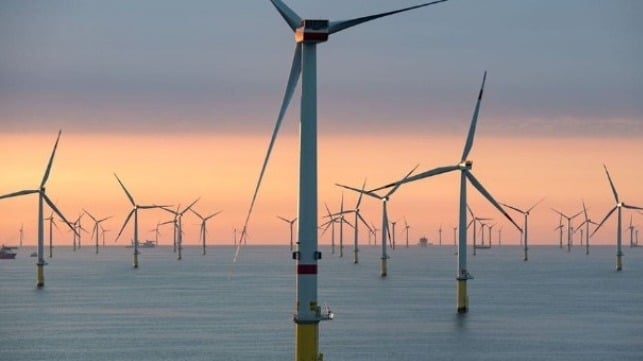Ørsted and CIP Propose JV to Double Denmark’s Offshore Wind Power

Two of the leading developers in the offshore wind sector, Ørsted and Copenhagen Infrastructure Partners (CIP), announced plans for a unique partnership approach that if approved by regulators could lead to more than doubling Denmark’s current installed offshore wind capacity. The companies are proposing a joint venture for the independent development of four sites through an approach called “open-door” without government involvement that would produce a further 5.2 GW.
Separately both companies are leaders in the growth of offshore wind power generation. Ørsted promotes itself as the world's largest developer of offshore wind. CIP, which was started in 2012 by former Ørsted executives, has become a major developer and investor in renewable energy.
The partnership between Ørsted and CIP would encompass the development, construction, and operation of the offshore wind farms as well as the related transmission assets. The partnership envisages four open-door projects that it says can create a Danish Power-to-X stronghold by delivering large-scale renewable electricity as soon as possible and with a target of 2027/2028 if feasible.
"Denmark has been a pioneer in offshore wind and is a front-runner in the green transformation. The four major open-door projects can help consolidate Denmark's continued leadership position and create the foundation to kick-start the next phase of a Danish business adventure around the production of renewable hydrogen and green fuels,” said Rasmus Errboe, Head of Region Continental Europe at Ørsted. “I’m very excited about the partnership with CIP where we combine our unique skills and knowledge to develop a substantial part of Denmark's offshore wind resources.”
The four projects highlighted by the partnership would include Vikinge Banke (1.1 GW) and Jyske Banke Nord (1.1 GW) to be located off Denmark’s west coast in the North Sea. Two other projects, Bornholm Bassin Syd (1.5 GW) and Bornholm Basin Øst (1.5 GW) would be located to the east in the Baltic Sea. Under the companies’ proposal, the four offshore wind farms will be established without support from Danish taxpayers and would be developed in parallel to any future government-led projects. Denmark currently has approximately 2.3 GW of installed offshore wind power generation.
“If we succeed in completing the projects, we’ll also ensure the renewable electricity needed to give the Danish Power-to-X industry a much-needed boost,” said Torsten Lodberg Smed, Senior Partner at Copenhagen Infrastructure Partners. “We’re pleased with the support from the Danish pension funds and their members, who priorities and invest in the green transition."
Ørsted and CIP noted that they fully support the ambitious political plans that have already been made to harvest Denmark's offshore wind resources. The companies said they believe that the partnership's large-scale offshore wind projects can, in parallel with the government tenders, contribute to further pace, value creation, and innovation of Denmark's green transition in several areas. They pointed to the potential to use the power generated at these sites for Power-to-X, potentially enabling regional centers for large-scale production of renewable hydrogen or green fuels.
Independently, CIP has been pursuing the opportunities presented through the government’s open-door process that permits a company to propose projects without a lease auction. The company has made several proposals to the Danish Energy Agency, which this summer reported it had 31 viable proposals from companies seeking permission to develop offshore wind sites following this approach.
The partnership is subject to merger clearance, which the companies said is expected before the end of 2022. The Danish Energy Agency is reviewing the project proposals and if selected it would grant authority to proceed with feasibility studies.
